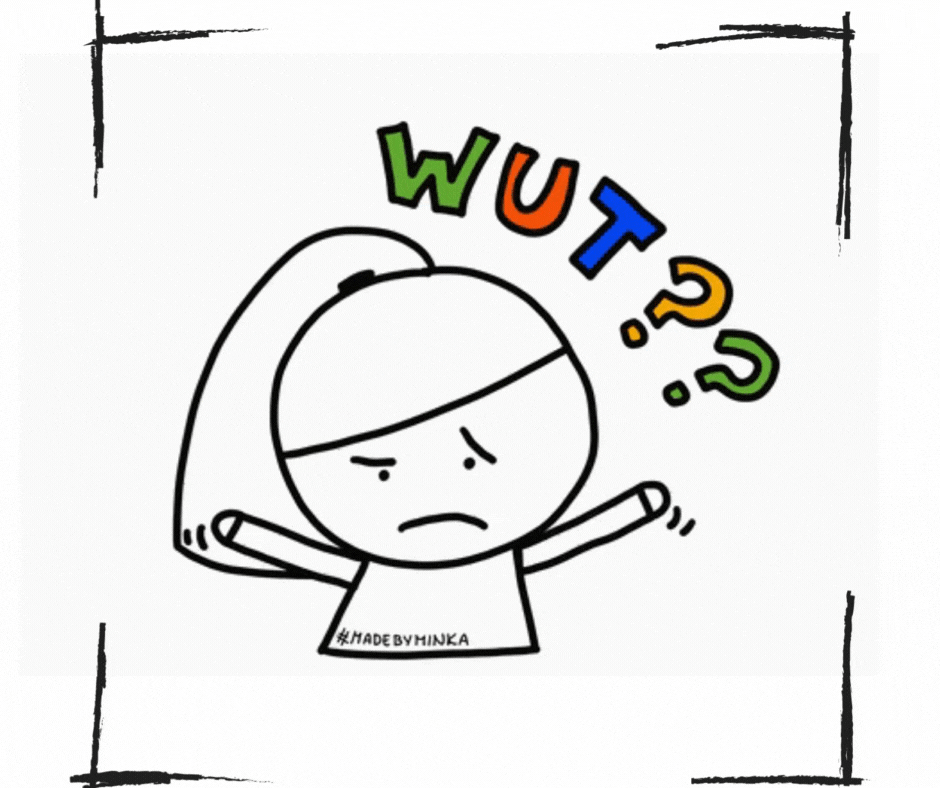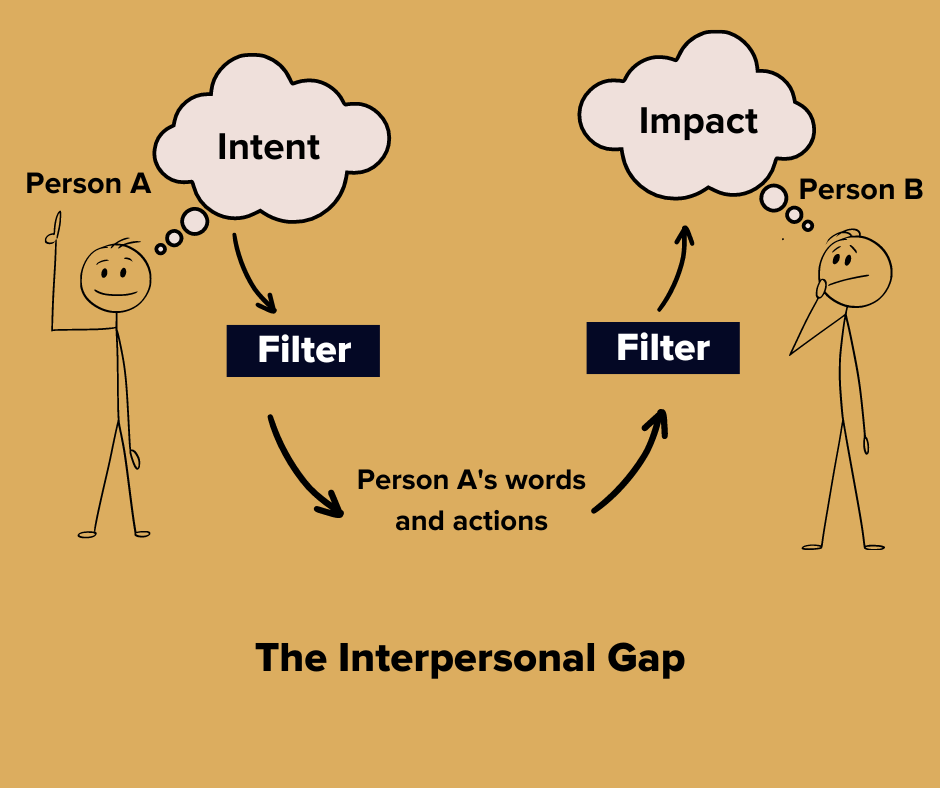Ever have a conversation with someone that just goes off the rails?
One minute, you’re just casually chatting about something innocuous like your favorite TV show, and the next moment, they’ve got some heat in their voice and a tear in their eyes. Somehow things seem to have gone in a weird direction and you don’t know what happened.
At that moment, you’re seeing what it looks like when someone gets pulled into one of their internal reactions. You thought you were talking about one thing, but now the conversation, in their mind, has become something else entirely.
What’s going on here?
 Credit: @madebyminka
Credit: @madebyminka
To better understand what’s happening when a conversation veers dramatically off course, let’s take a look at a concept called “The Interpersonal Gap.”
When I talk, there’s what I *intend* to communicate, which is filtered through everything that makes up my personality.
Then there’s what I *actually* say and do.
And lastly, there’s you, taking in my words and actions through your OWN set of filters to have an *impact* on you.
These filters inside of me and inside of you are what create “The Interpersonal Gap”.
 Concept by John Wallen, The Interpersonal Gap
Concept by John Wallen, The Interpersonal Gap
When a conversation has gotten heated, it’s often because something has triggered the other person within their filters. These filters contain everything from expectations of the culture we live in to our family’s unspoken rules to our personal beliefs about how people should be.
Seeing this model can help us understand there are three potential realities —
- the one in our minds of what we intended,
- the one in another person’s head of how things landed,
- and the one of what literally was said and done.
Think of a time when you had a conversation that went astray, and apply this theory to your memory of it.
Ask yourself:
What was your intent?
What was actually said?
What do you think what happening in the other person’s mind?
And, most importantly, how do each of these things differ?
I teach The Interpersonal Gap to my Soul School students because it’s one of many lenses we can look through to understand what the heck is going on in our relationships.
When we remember there is always a gap in every communication, it’s easier to stay curious and learn more about what’s happening in our minds and in the minds of others. Better understanding leads to better connection. It’s by investing time in this inquiry that we create more of the connection we truly crave.
